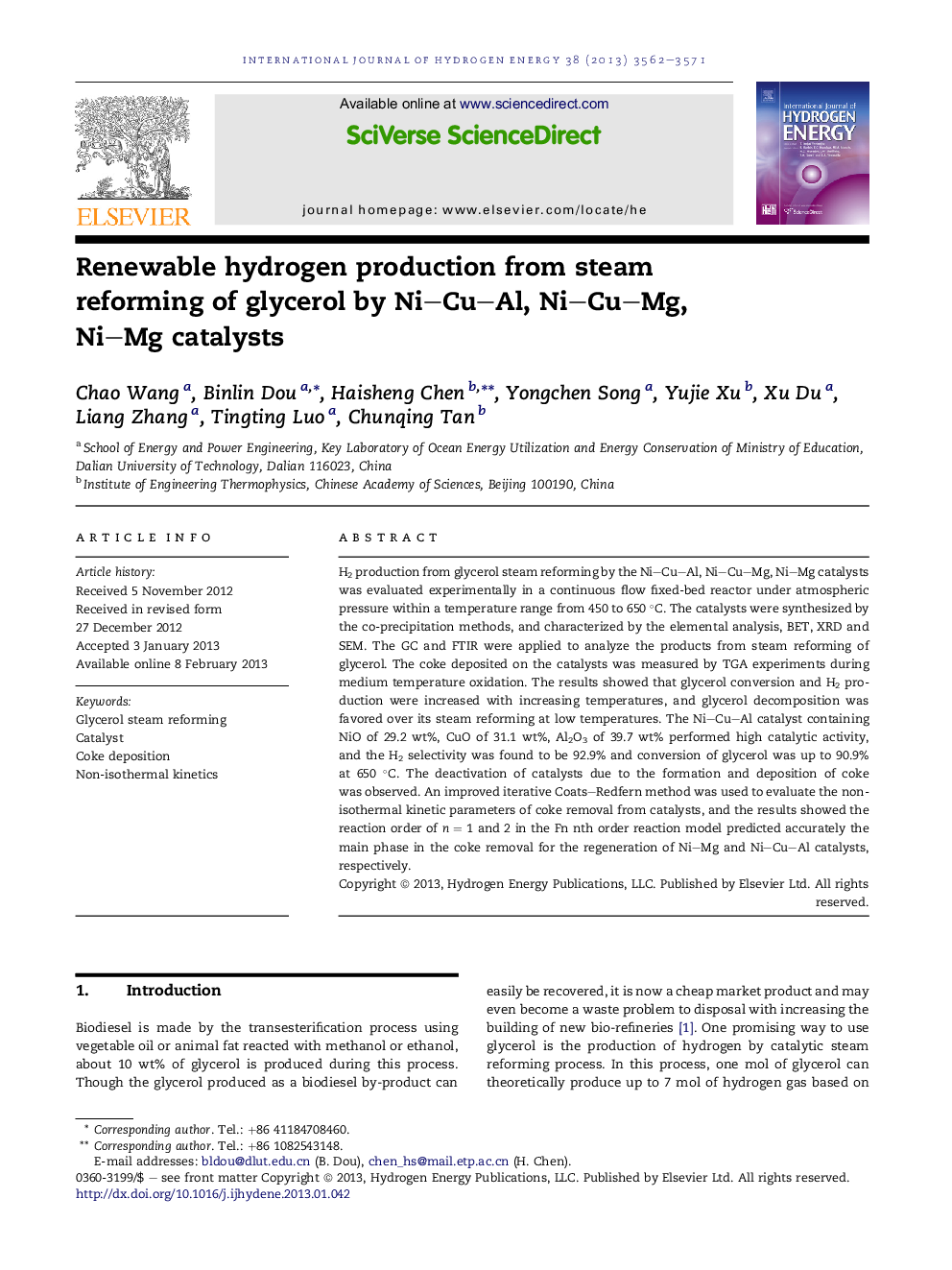| Article ID | Journal | Published Year | Pages | File Type |
|---|---|---|---|---|
| 1275572 | International Journal of Hydrogen Energy | 2013 | 10 Pages |
H2 production from glycerol steam reforming by the Ni–Cu–Al, Ni–Cu–Mg, Ni–Mg catalysts was evaluated experimentally in a continuous flow fixed-bed reactor under atmospheric pressure within a temperature range from 450 to 650 °C. The catalysts were synthesized by the co-precipitation methods, and characterized by the elemental analysis, BET, XRD and SEM. The GC and FTIR were applied to analyze the products from steam reforming of glycerol. The coke deposited on the catalysts was measured by TGA experiments during medium temperature oxidation. The results showed that glycerol conversion and H2 production were increased with increasing temperatures, and glycerol decomposition was favored over its steam reforming at low temperatures. The Ni–Cu–Al catalyst containing NiO of 29.2 wt%, CuO of 31.1 wt%, Al2O3 of 39.7 wt% performed high catalytic activity, and the H2 selectivity was found to be 92.9% and conversion of glycerol was up to 90.9% at 650 °C. The deactivation of catalysts due to the formation and deposition of coke was observed. An improved iterative Coats–Redfern method was used to evaluate the non-isothermal kinetic parameters of coke removal from catalysts, and the results showed the reaction order of n = 1 and 2 in the Fn nth order reaction model predicted accurately the main phase in the coke removal for the regeneration of Ni–Mg and Ni–Cu–Al catalysts, respectively.
► Catalysts synthesized by co-precipitation performed high H2 selectivity and yield. ► Glycerol decomposition was favored over its steam reforming at low temperatures. ► Deactivation of catalysts due to coke deposition was observed during reforming. ► Coke deposited was measured by TGA experiments during medium temperature oxidation. ► Improved iterative Coats–Redfern method was applied to kinetics of carbon removal.
